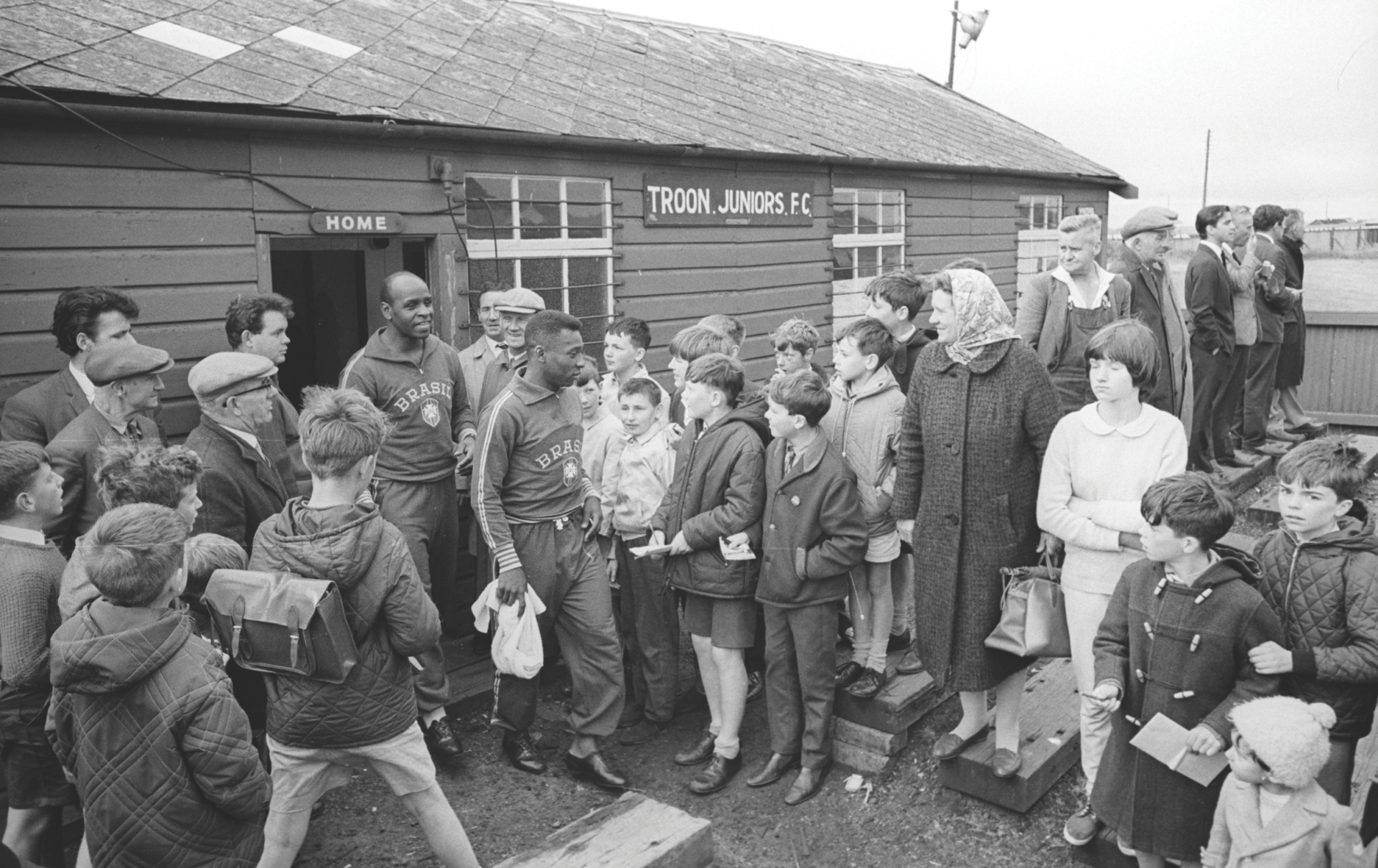Just as the great tenors and operatic divas live to play the great Opera houses of the world – La Scala Milan, the New York Met, Sydney etc – so the great footballers want to strut their stuff on the great stadia. Hampden Park, faded and shabby though it may have been for much of its life, is such an iconic stadium, which has played host to all the stellar names.
Ferenc Puskas and Alfredo de Stefano cemented their greatness there in 1960; before that England’s Stanley Matthews and Tom Finney, the wonderful Welsh star John Charles and Irish greats such as Peter Doherty and Danny Blanchflower had been cheered, even as they broke Scottish hearts. Puskas, back in 1954, had electrified the stadium with the great Hungarian national team of the time. In 2002 Zinedene Zidane captivated the ‘Old Lady’ with one of its greatest goals, while, back in 1979 Diego Maradona signalled his arrival on the world stage with another memorable Hampden goal.
However 50 years ago, on 25 June, 1966, Pele, arguably the greatest of them all, found the 105 metres x 68 metres Hampden pitch a difficult stage on which to perform.
Then, as in 2016, Scotland were facing the fact that football’s biggest show was taking place in a neighbouring country and we were on the outside looking in. We had been cast in the role of sparring partners for better countries, preparing for bigger games by playing us. Portugal had already come and found us wanting. Now Brazil, the reigning world champions and the team everyone wanted to see, were dropping in to warm up for the challenge of England 1966 by playing Scotland.
Pele, ever since his emergence onto the world stage as a 17-year-old in Sweden in 1958, had been seen as the greatest player in the world. Eight years on, at the height of his powers, he was the man all of Scotland and Britain wanted to see in action. His only previous appearance in the country where football was born had been in a low-key club match for Santos against Sheffield Wednesday in 1962. The presence of the great man attracted 75,000 fans to Hampden for a Saturday evening match. More than 50,000 had turned up to watch Portugal, including Eusebio, a week earlier.
Pele and the Brazilians had been mobbed when training at Portland Park, Troon Juniors’ tiny ground, during the week, but Pele wasn’t going to have it all his own way at Hampden, Scotland manager John Prentice named Jim Baxter, a player who never thought any rival was better than him, in the No.10 shirt, rather than the No.6 he usually wore. The battle of the two 10s would be key. Prentice, then in a period of experimentation, also gave Celtic sweeper John Clark his international debut, and at the 11th hour, called up an almost unknown Hibs teenager named Peter Cormack for his debut.
It was first blood to Baxter, who, inside the opening minute, threaded an inch-perfect pass into the path of Celtic’s Stevie Chalmers, who ran on to slot the ball behind the great Gilmar in the Brazilian goal. Scotland 1, Brazil 0. Back came Brazil and parity was restored in 16 minutes when Servillo beat Bobby Ferguson in the Scotland goal to equalise. And that’s how it stayed, with neither side able to conjure up a winning goal.
And what of Pele? Did he light up Hampden in the manner of the other greats? Well, no. In fact the great man was a peripheral figure for most of the game, largely thanks to the man-marking job – in more ways than one – carried out by a young Scottish player, Leeds United’s Billy Bremner, winning only his seventh cap. There was seldom more than a sheet of paper between Pele and his marker, who got in several fierce knocks on his distinguished opponent. To be fair, at least once Pele gave as good as he got, leading to a nose-to-nose confrontation between the red-headed Scot and another great Brazilian, Gerson, after Bremner had hacked Pele down.
On the few occasions when Pele escaped Bremner’s clutches, he invariably ran into Celtic’s John Clark. (He certainly remembered the quiet Celt, recognising him immediately when they bumped into each other in a New York elevator years later.)
A draw with the reigning World Champions satisfied Scottish honour. Goalscorer Chalmers took home Pele’s No.10 shirt; Brazil went on to the World Cup in England, where it all went wrong, as Pele and the other great Brazilians – Garrincha, Gerson and Jairzhino – were kicked out of the tournament by cynical European defenders. They returned home, chastened, to be met with jeering fans at Rio airport. There was even an effigy of Pele being hung.
Scotland stumbled on, manager Prentice gave way to caretaker Malky MacDonald, then Bobby Brown, but, within a year of that Hampden game, Scotland were ‘unofficial world champions’ after beating England at Wembley while Celtic were European champions and Rangers lost in the Cup-Winner’s Cup final.
Yes, 1966 was a bad year for Scotland, and for Pele. But we recovered in 1967, as did Pele in 1970. What might the future hold 50 years on?


